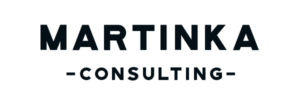On December 30, 2017 the Wall Street Journal featured a column by Daniel Pink, How to Be Healthier, Happier and More Productive: It’s All in the Timing, which was an excerpt from his new book When, The Scientific Secrets of Perfect Timing. I’ve started reading the book and found this article to be an excellent introduction to the book.
The article concentrates on timing during the day. Pink writes that we all have cycles, most of us on a cycle of peak-trough-rebound, although about 20% of people are truly night owls, with a cycle of rebound-trough-peak. Because of this cycle, most of us are creative in the afternoon, during our rebound period. Our analytical skills tend to be best during the late morning, after we’re energized and in a groove, and before we hit the mid-day slump, i.e. trough.
What I found interesting was the study’s research on exercise. Exercising in the morning allows for:
- Building a routine (we do it before we get tired and/or distracted).
- Boosting our mood.
- Losing weight, because people generally don’t eat before early exercise and therefore burn fat not food.
Exercising in the afternoon or evening gives:
- Fewer injuries because as our body temperature rises during the day our muscles are warmer.
- Better performance (cardio and strength).
Last fall I wrote about a book titled, Rest. Similar to what’s in Rest, When recommends we take more breaks to increase productivity. This was shown to be true in a study of students and their taking of tests during different times of the day. Morning tests generate higher scores. But afternoon tests after a break yielded much better results than without breaks. The efficiency of working with others also improves after a break.
What was really interesting was that when the break included being outdoors, people who took a short outdoor walk were happier and more rested than those whose break included walking around indoors. In the book Rest, one of the focal points was how Charles Darwin took daily outdoor walks. He also took (what I’ll call) super breaks, aka naps.
Conclusion
It appears the more we study human patterns and tendencies the more we get away from the philosophy that everybody needs to work, work, work. This is especially true for people who use creativity to some extent. This could be writing, art, sales, problem solving, and much more. The concepts above don’t apply to those of us on an assembly line, running a CNC machine, hanging drywall, or similar. But, it’s also known regular breaks from physical work increase productivity (I remember this from my Production 101 class).
The above lends credence to what I tell students in my Dynamically Grow A Consulting Business at the SBA office, find your best time of the day for certain tasks and do those tasks at those times. And, in the final topic, on life balance, I emphasize taking breaks.

